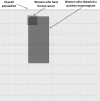Visual aids improve diagnostic inferences and metacognitive judgment calibration
- PMID: 26236247
- PMCID: PMC4504147
- DOI: 10.3389/fpsyg.2015.00932
Visual aids improve diagnostic inferences and metacognitive judgment calibration
Abstract
Visual aids can improve comprehension of risks associated with medical treatments, screenings, and lifestyles. Do visual aids also help decision makers accurately assess their risk comprehension? That is, do visual aids help them become well calibrated? To address these questions, we investigated the benefits of visual aids displaying numerical information and measured accuracy of self-assessment of diagnostic inferences (i.e., metacognitive judgment calibration) controlling for individual differences in numeracy. Participants included 108 patients who made diagnostic inferences about three medical tests on the basis of information about the sensitivity and false-positive rate of the tests and disease prevalence. Half of the patients received the information in numbers without a visual aid, while the other half received numbers along with a grid representing the numerical information. In the numerical condition, many patients-especially those with low numeracy-misinterpreted the predictive value of the tests and profoundly overestimated the accuracy of their inferences. Metacognitive judgment calibration mediated the relationship between numeracy and accuracy of diagnostic inferences. In contrast, in the visual aid condition, patients at all levels of numeracy showed high-levels of inferential accuracy and metacognitive judgment calibration. Results indicate that accurate metacognitive assessment may explain the beneficial effects of visual aids and numeracy-a result that accords with theory suggesting that metacognition is an essential part of risk literacy. We conclude that well-designed risk communications can inform patients about healthrelevant numerical information while helping them assess the quality of their own risk comprehension.
Keywords: Bayesian reasoning; diagnostic inferences; medical decision making; natural frequencies; numeracy; risk literacy; visual aids.
Figures





Similar articles
-
Visual representation of statistical information improves diagnostic inferences in doctors and their patients.Soc Sci Med. 2013 Apr;83:27-33. doi: 10.1016/j.socscimed.2013.01.034. Epub 2013 Feb 8. Soc Sci Med. 2013. PMID: 23465201
-
Improving risk literacy in surgeons.Patient Educ Couns. 2016 Jul;99(7):1156-1161. doi: 10.1016/j.pec.2016.01.013. Epub 2016 Jan 29. Patient Educ Couns. 2016. PMID: 26879804
-
Designing Visual Aids That Promote Risk Literacy: A Systematic Review of Health Research and Evidence-Based Design Heuristics.Hum Factors. 2017 Jun;59(4):582-627. doi: 10.1177/0018720817690634. Epub 2017 Feb 13. Hum Factors. 2017. PMID: 28192674
-
Numeracy and the Motivational Mind: The Power of Numeric Self-efficacy.Med Decis Making. 2022 Aug;42(6):729-740. doi: 10.1177/0272989X221099904. Epub 2022 May 18. Med Decis Making. 2022. PMID: 35583117
-
How numeracy influences risk comprehension and medical decision making.Psychol Bull. 2009 Nov;135(6):943-73. doi: 10.1037/a0017327. Psychol Bull. 2009. PMID: 19883143 Free PMC article. Review.
Cited by
-
A New Visualization for Probabilistic Situations Containing Two Binary Events: The Frequency Net.Front Psychol. 2020 May 26;11:750. doi: 10.3389/fpsyg.2020.00750. eCollection 2020. Front Psychol. 2020. PMID: 32528335 Free PMC article.
-
From reading numbers to seeing ratios: a benefit of icons for risk comprehension.Psychol Res. 2019 Nov;83(8):1808-1816. doi: 10.1007/s00426-018-1041-4. Epub 2018 Jun 21. Psychol Res. 2019. PMID: 29931591
-
Comprehension and computation in Bayesian problem solving.Front Psychol. 2015 Jul 27;6:938. doi: 10.3389/fpsyg.2015.00938. eCollection 2015. Front Psychol. 2015. PMID: 26283976 Free PMC article. Review.
-
Tversky and Kahneman's Cognitive Illusions: Who Can Solve Them, and Why?Front Psychol. 2021 Apr 12;12:584689. doi: 10.3389/fpsyg.2021.584689. eCollection 2021. Front Psychol. 2021. PMID: 33912097 Free PMC article.
-
Previous beliefs affect Bayesian reasoning in conditions fostering gist comprehension.Mem Cognit. 2023 Nov;51(8):1819-1835. doi: 10.3758/s13421-023-01435-1. Epub 2023 Jun 2. Mem Cognit. 2023. PMID: 37268761 Free PMC article.
References
-
- Brase G. L. (2009). Pictorial representations in statistical reasoning. Appl. Cogn. Psychol. 23, 369–381. 10.1002/acp.1460 - DOI
LinkOut - more resources
Full Text Sources
Other Literature Sources

